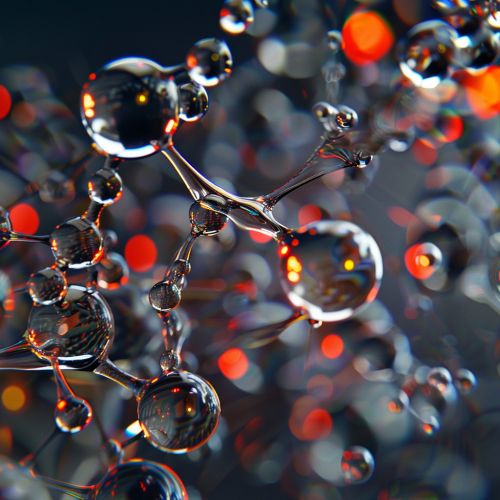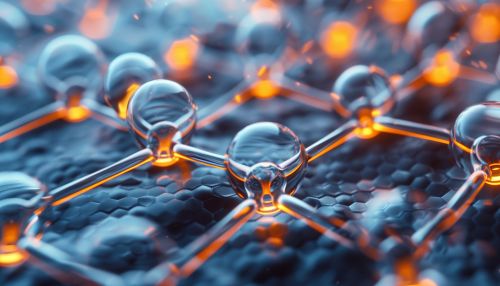Catalysts
Introduction
A catalyst is a substance that increases the rate of a chemical reaction without itself undergoing any permanent chemical change. Catalysts are crucial in both industrial processes and biological systems, significantly enhancing the efficiency and selectivity of chemical transformations. This article delves into the various types of catalysts, their mechanisms, applications, and the principles underlying their function.
Types of Catalysts
Catalysts can be broadly classified into two main categories: homogeneous and heterogeneous catalysts. Additionally, biocatalysts, which are enzymes, form a distinct category due to their unique properties and functions.
Homogeneous Catalysts
Homogeneous catalysts are those that exist in the same phase as the reactants, typically in a liquid phase. These catalysts are often used in solution, where they can interact intimately with the reactants. Examples include transition metal complexes, such as Wilkinson's catalyst, which is used in hydrogenation reactions.
Heterogeneous Catalysts
Heterogeneous catalysts exist in a different phase than the reactants, usually as solids in contact with gaseous or liquid reactants. These catalysts are widely used in industrial processes due to their ease of separation from the reaction mixture. Common examples include platinum in catalytic converters and iron in the Haber process for ammonia synthesis.
Biocatalysts
Biocatalysts, or enzymes, are proteins that catalyze biochemical reactions in living organisms. They are highly specific and efficient, often operating under mild conditions. Examples include amylase, which breaks down starch into sugars, and DNA polymerase, which synthesizes DNA strands.
Mechanisms of Catalysis
The mechanism by which catalysts operate can vary significantly depending on the type of catalyst and the nature of the reaction. However, several fundamental principles are common to most catalytic processes.
Activation Energy Reduction
Catalysts function by lowering the activation energy of a reaction, thereby increasing the reaction rate. This is achieved by providing an alternative reaction pathway with a lower energy barrier. For example, in the case of enzyme catalysis, the enzyme-substrate complex stabilizes the transition state, reducing the activation energy required for the reaction.
Adsorption and Surface Reactions
In heterogeneous catalysis, the reactants are adsorbed onto the surface of the catalyst, where the reaction occurs. The adsorption process can weaken the bonds within the reactant molecules, facilitating their transformation into products. For instance, in the hydrogenation of ethene on a platinum catalyst, ethene and hydrogen molecules adsorb onto the platinum surface, where they react to form ethane.
Intermediate Formation
Many homogeneous catalysts operate by forming intermediate complexes with the reactants. These intermediates undergo subsequent reactions to form the final products, with the catalyst being regenerated in the process. A classic example is the hydroformylation reaction, where an organometallic catalyst forms an intermediate complex with the reactants before producing the final aldehyde product.
Applications of Catalysts
Catalysts are indispensable in a wide range of applications, from industrial manufacturing to environmental protection and biomedical research.
Industrial Processes
Catalysts play a vital role in numerous industrial processes, enhancing efficiency and selectivity. Key examples include:
- The Haber process for ammonia synthesis, which uses iron as a catalyst.
- The Contact process for sulfuric acid production, employing vanadium(V) oxide as a catalyst.
- Catalytic cracking in petroleum refining, where zeolites are used to break down large hydrocarbon molecules into smaller, more valuable products.
Environmental Applications
Catalysts are essential in mitigating environmental pollution. They are used in:
- Catalytic converters in automobiles, which reduce harmful emissions by converting carbon monoxide, hydrocarbons, and nitrogen oxides into less harmful substances.
- Water treatment processes, where catalysts help in the degradation of pollutants and the removal of contaminants.
Biomedical Applications
In the biomedical field, catalysts, particularly enzymes, are used in various applications such as:
- Drug synthesis, where enzymes catalyze specific reactions to produce pharmaceuticals with high purity and yield.
- Diagnostic assays, where enzymes are used to detect and quantify biomolecules in clinical samples.
Principles of Catalysis
Understanding the principles of catalysis is crucial for designing efficient and selective catalysts. Key principles include:
Catalyst Design
The design of a catalyst involves optimizing its structure and composition to achieve the desired activity and selectivity. Factors such as the nature of the active site, the support material, and the presence of promoters or inhibitors are considered. For example, in heterogeneous catalysis, the surface area and porosity of the catalyst support can significantly influence its performance.
Kinetics and Thermodynamics
The kinetics and thermodynamics of catalytic reactions are studied to understand the reaction mechanism and optimize reaction conditions. Kinetic studies involve measuring the reaction rate and determining the rate-determining step, while thermodynamic studies focus on the equilibrium constants and the energy changes associated with the reaction.
Catalyst Deactivation
Catalyst deactivation is a common issue in catalytic processes, where the catalyst loses its activity over time. Deactivation can occur due to various reasons, such as poisoning, fouling, sintering, or thermal degradation. Strategies to mitigate deactivation include catalyst regeneration, the use of more robust materials, and the development of deactivation-resistant catalysts.
Advanced Topics in Catalysis
Several advanced topics in catalysis are currently the focus of extensive research, aiming to develop more efficient and sustainable catalytic processes.
Asymmetric Catalysis
Asymmetric catalysis involves the use of chiral catalysts to produce enantiomerically pure products. This is particularly important in the pharmaceutical industry, where the biological activity of a drug can depend on its chirality. Notable examples include the use of chiral ligands in transition metal catalysis and the application of chiral organocatalysts.
Photocatalysis
Photocatalysis involves the use of light to activate a catalyst, driving chemical reactions. This approach is promising for applications such as solar energy conversion and environmental remediation. Titanium dioxide is a widely studied photocatalyst, known for its ability to degrade organic pollutants under UV light.
Electrocatalysis
Electrocatalysis involves the use of catalysts to facilitate electrochemical reactions, such as those occurring in fuel cells and electrolyzers. Research in this area focuses on developing catalysts with high activity and stability for reactions such as the oxygen reduction reaction and the hydrogen evolution reaction.
Future Directions in Catalysis
The field of catalysis is continuously evolving, with ongoing research aimed at addressing current challenges and exploring new opportunities.
Sustainable Catalysis
Sustainable catalysis focuses on developing environmentally friendly catalytic processes that minimize waste and energy consumption. This includes the use of renewable feedstocks, green solvents, and recyclable catalysts. The development of biomass-derived catalysts and the utilization of carbon dioxide as a feedstock are key areas of interest.
Computational Catalysis
Computational catalysis involves the use of theoretical and computational methods to understand and predict catalytic behavior. Techniques such as density functional theory (DFT) and molecular dynamics simulations are used to study reaction mechanisms, design new catalysts, and optimize catalytic processes.
Catalysis in Nanotechnology
Nanotechnology offers new opportunities for catalysis, with the potential to design catalysts with precisely controlled structures and properties at the nanoscale. Nanocatalysts can exhibit unique catalytic behavior due to their high surface area, quantum effects, and the ability to tailor their electronic and geometric structures.
Conclusion
Catalysts are indispensable in modern chemistry, playing a crucial role in industrial processes, environmental protection, and biomedical applications. Understanding the principles of catalysis and the mechanisms by which catalysts operate is essential for the development of more efficient and sustainable catalytic processes. Ongoing research in areas such as asymmetric catalysis, photocatalysis, and electrocatalysis continues to push the boundaries of this dynamic field, promising new innovations and advancements in the future.


